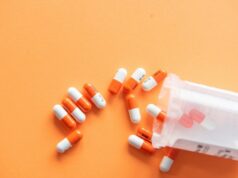Cameron Health announced that the 1,000th patient was recently implanted with the S-ICD system, the world’s only completely subcutaneous implantable defibrillator.
The 1,000th patient was implanted by Lara Dabiri Abkenari, in association with Luc Jordaens at the Erasmus Medical Center in Rotterdam, The Netherlands. Jordaens remarked, “We have gained significant insight into this new technology over the past two years and are encouraged by the results. The avoidance of transvenous lead placement has significant implications for both short and long-term complication rates.”
“Our experience with these first 1,000 patients has confirmed that the S-ICD system is a valuable new treatment option for both primary and secondary prevention patients at risk of sudden cardiac arrest. In addition, the S-ICD system provides an important alternative for patients that are not candidates for conventional transvenous ICD systems,” said Kevin Hykes, Cameron Health’s president and CEO.
“The S-ICD system has the inherent advantage of not requiring an electrode inside of the heart,” said Reinoud Knops, Amsterdam Medical Center, The Netherlands. “It will be important to investigate how the less-invasive approach of the S-ICD system will impact the rate of serious complications in comparison to traditional transvenous ICD systems.”
In order to evaluate the performance of the S-ICD system in the real-world setting, Cameron Health recently initiated the EFFORTLESS registry in Europe and New Zealand. EFFORTLESS will follow the S-ICD system in 1,000 patients for a period of 60 months post implant.
In the USA, Cameron Health plans to submit clinical data from its recently completed, 330-patient S-ICD system pivotal IDE clinical study to the FDA in early 2012.
About the S-ICD system
The S-ICD system is unique in that the implantation of the system is entirely subcutaneous, removing the need for lead placement inside the heart. Essentially, the S-ICD system eliminates the major risks associated with transvenous leads. The S-ICD system detects ventricular arrhythmias that can lead to sudden cardiac arrest. When abnormal arrhythmias are detected, the S-ICD system delivers an 80-joule shock to restore the heart’s normal rhythm.












